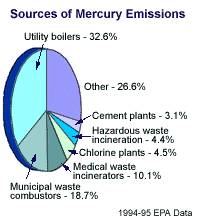Why focus so much on carbon dioxide so often when there are other forcings?
1) It’s a lot easier to say carbon dioxide than radiative forcings, fewer blank looks.
Radiative forcings affect the radiation balance of the Earth. Before the industrial revolution, radiation in (light, including visible, infrared, and ultraviolet) was the same as radiation out.
Examples of direct forcings:
• CO2 and other greenhouse gases absorbs some of the infrared (a greater part of radiation out than radiation in) and re-emits it. About half is re-emitted down, rather than up.
• land-use change can increase albedo (the portion of light reflected) by removing darker trees. This is a negative feedback.
Example of indirect forcings, which alter the climate first:
• Added aerosols (gaseous suspension of fine solid or liquid particles) modify precipitation efficiency of clouds, changing the radiative property of clouds.
2) Adding all the positive and negative forcings together gives a total forcing about the same as carbon dioxide alone.
3) Carbon dioxide is the fastest growing forcing.
The IPCC 2007 Summary for Policymakers: The Physical Science (go to IPCC and download WG1–working group 1) has a more detailed figure of Radiative Forcing Components, here is a simplified version without error bars:

Estimate of 1750-2000 Climate Forcings
Interpreting the figure
The net increase in forcings from 1750 is 1.7 W/m2, the same as adding a 1.7 W bulb over every square meter of Earth, land and sea, 24 hours/day. This is just a little more than the contribution from carbon dioxide.
Methane, CH4, contributes a good chunk. Natural gas is primarily methane, leaked into the atmosphere in the process of getting any fossil fuel. Chlorofluorocarbons (which also destroy the ozone layer) and N20, (nitrous oxide, also an ozone destroying gas), primarily from nitrogen fertilizers, animal waste, and industry, and ozone are also important. Together, these gases have contributed 2/3 as much as carbon dioxide since 1750. Better control of methane emissions and banning of CFCs through much of the world are decreasing the importance of these GHGs in today’s emissions.
Methane’s contribution in the cumulative emissions figure was about 33% of carbon dioxide’s.

Methane’s current contribution is lower, about 29% as much as carbon dioxide.

Methane emissions in the US are about 1/9 of carbon dioxide emissions from burning fossil fuels.

US Methane Projections are expected to stay more or less the same even with no voluntary behavior change, and decline by 10% with voluntary changes; presumably faster declines are possible.
Changes since 1750 to stratospheric ozone have had a negative forcing, because we’ve destroyed part of the ozone layer. The ground layer ozone we’ve added has had a strong positive forcing.
About half as important as carbon dioxide is black carbon, from burning fossil fuels and biomass (eg, trees). Soot on snow has changed the reflectivity, leading to greater warming, about 0.1 W/m2. A brighter sun has added 0.1 W/m2 according to the latest IPCC report, less than the Hansen estimate.
The Earth has cooled (temporarily, anyway) because of the reflective aerosols we have added. IPCC estimates that the direct effect has been to increase how much sunlight is reflected off the Earth, an effect of -0.5 W/m2, and the indirect effect from changing cloud albedo has led to another -0.7 W/m2 change.
Feedback
Feedbacks are positive if they reinforce the direction of change, and negative if they counter it. If the temperature rises/falls, the amount of permanent snow in polar regions decreases/increases, reducing/increasing the percentage of sunlight reflected. Both represent positive feedback.
Other examples:
• A warmer climate leads to darker plants which absorb more sunlight.
• A warmer climate reduces the amount of carbon dioxide stored in trees, or in the soil.
• A warmer climate increases cloud reflectivity — this would be an example of negative feedback.
While climatologists are unsure of how important various positive and negative feedback mechanisms will be, they are confident that positive feedback will be more important than negative feedback, and that it will be significant.
There is great worry about the release of carbon dioxide (under aerobic conditions) and methane (under anaerobic) from warming soil. We are not there yet:

Global methane emissions do not yet include a substantial contribution from warming soil.
From Methane to Markets:
China, India, the United States, Brazil, Russia, and other Eurasian countries are responsible for almost half of all anthropogenic methane emissions. Methane emission sources vary significantly among countries. For example, the two key sources of methane emissions in China are coal mining and rice production. Russia emits most of its methane from natural gas and oil systems; India’s primary sources are rice and livestock production; and landfills are the largest source of U.S. methane emissions.
However, positive feedbacks (which may include methane and carbon dioxide from warming soil) are becoming increasingly important. From the IPCC 2007 Summary for Policymakers: The Physical Science:
…model studies suggest that to stabilise at 450 ppm carbon dioxide, could require that cumulative emissions over the 21st century be reduced from an average of approximately 670 [630 to 710] GtC (billion metric tonnes carbon) to approximately 490 [375 to 600] GtC.










